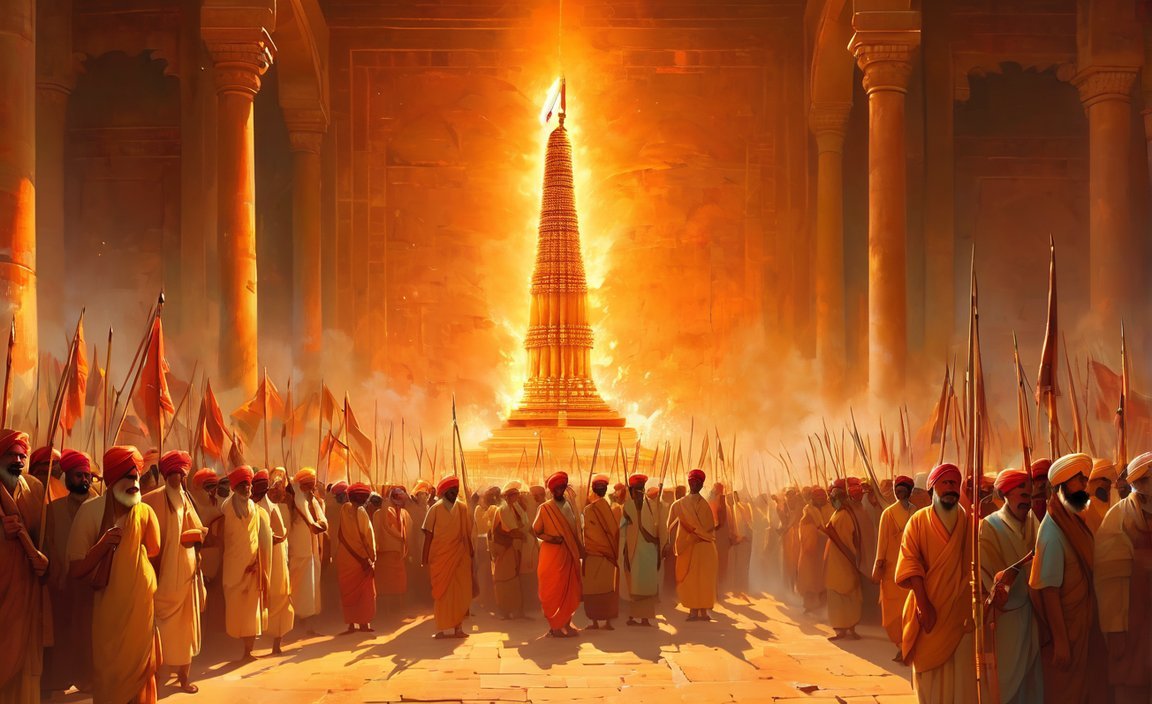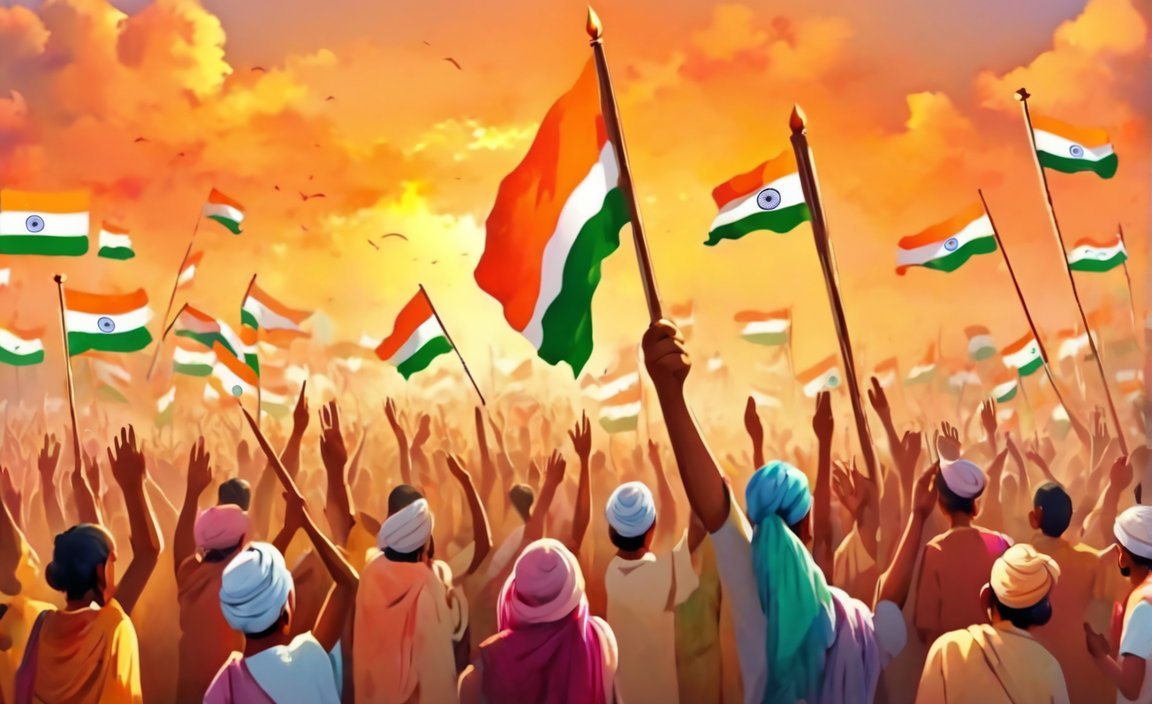The Indian Constitution, the supreme law of the land, stands as a testament to the nation’s unwavering commitment to democracy, justice, and social equality. It’s a document that has shaped India’s destiny, guiding the country through decades of change and challenges. As we delve into the intricacies of this remarkable document, let’s uncover five fascinating facts that make the Indian Constitution truly unique.
Fact 1: The Longest Constitution in the World

At an impressive length of 1.46 lakh words, the Indian Constitution stands as the longest written constitution of any sovereign country in the world. This comprehensive document, encompassing a Preamble, 22 Parts with 448 Articles, 12 Schedules, 5 Appendices, and 115 amendments, reflects the depth and comprehensiveness with which the framers sought to address the diverse needs and aspirations of the newly independent nation.
The sheer length of the Indian Constitution is a testament to the framers’ meticulous attention to detail and their desire to create a document that would serve as a bedrock for India’s democratic future. By addressing a wide range of issues, from fundamental rights and directive principles to the structure and powers of the government, the Constitution ensured that no aspect of India’s governance would be left unconsidered.
Fact 2: A Bilingual Document in Hindi and English
In a remarkable display of inclusivity and respect for India’s linguistic diversity, the Indian Constitution stands as a bilingual document, officially recognized in both Hindi and English. This decision acknowledges the nation’s rich linguistic heritage and ensures that the Constitution’s principles and provisions are accessible to all citizens, regardless of their mother tongue.
The bilingual nature of the Constitution holds immense significance, bridging the linguistic divide and ensuring that every citizen can engage with the document that forms the foundation of their nation’s governance. By providing access to the Constitution in both Hindi and English, the framers demonstrated their commitment to fostering unity and ensuring that no citizen is left behind.
The original copies of the Constitution, handwritten in both Hindi and English, serve as a testament to the dedication and meticulousness that went into its creation. The elegant calligraphy and the intricate illustrations adorning each page underscore the Constitution’s status as a sacred document, one that embodies the spirit of India’s diverse linguistic tapestry.
Fact 3: A Handcrafted Masterpiece – A Testament to India’s Artistic Heritage
In a remarkable departure from the conventional practice of printing or typing constitutions, the Indian Constitution stands as a handcrafted masterpiece, meticulously handwritten in both Hindi and English. This decision, far from being a mere logistical choice, was a deliberate and symbolic gesture, underscoring the Constitution’s status as a sacred document, a testament to the nation’s rich cultural heritage and artistic spirit.
The task of penning this monumental document fell upon Prem Behari Narain Raizada, a calligrapher of exceptional skill and artistry. With meticulous attention to detail, he transformed the Constitution’s text into a flowing work of art, each letter beautifully crafted and harmoniously aligned. The graceful strokes of his calligraphy lend an air of elegance and refinement to the document, elevating it from a mere legal text to an embodiment of India’s artistic sensibilities.
Further enriching the visual tapestry of the Constitution are the intricate illustrations adorning each page, the work of a team of artists led by the renowned Nandalal Bose. These illustrations, inspired by India’s diverse cultural traditions, depict scenes from mythology, history, and everyday life, providing a visual commentary on the Constitution’s principles and ideals. The delicate brushwork and vibrant colors bring these scenes to life, transforming the Constitution into a captivating visual narrative that speaks to the soul of the nation.
The decision to handwrite and embellish the Indian Constitution was not merely an aesthetic choice; it was a profound statement about the document’s significance. By elevating the Constitution to the status of a work of art, the framers recognized its enduring value, not just as a legal text but as a symbol of India’s identity, its aspirations, and its enduring cultural heritage.
Fact 4: Safeguarding the Nation’s Heritage – The Preservation of Original Copies

In a testament to the profound historical and symbolic value of the original handwritten copies of the Indian Constitution, the Government of India has taken meticulous measures to ensure their preservation. These precious documents, meticulously crafted by Prem Behari Narain Raizada and adorned with intricate illustrations by Nandalal Bose, are housed in specially designed helium-filled cases within the Central Library of the Parliament.
The controlled environment of the library, carefully maintained with optimal temperature, humidity, and light levels, provides an ideal sanctuary for these irreplaceable artifacts. The helium-filled cases, an innovative preservation technique, further safeguard the documents from deterioration and ensure their longevity.
The unwavering commitment to preserving the original copies of the Constitution underscores the nation’s deep reverence for its founding document and its recognition of the Constitution’s enduring legacy. These copies serve as tangible links to India’s past, embodying the spirit of democracy, justice, and equality that the Constitution upholds.
By safeguarding these precious documents, the Government of India ensures that the Constitution’s physical form remains intact, preserving it for future generations to witness and appreciate the craftsmanship, artistry, and historical significance of this monumental document.
Fact 5: A Living Document – Adapting to the Nation’s Evolving Needs
The Indian Constitution stands not as a rigid, unyielding text but as a living document, capable of adapting to the ever-changing needs and aspirations of the nation. Since its adoption in 1950, the Constitution has undergone 115 amendments, each carefully considered and debated through a rigorous legislative process to ensure that the document remains relevant and aligned with the country’s progress. These amendments reflect India’s resilience and adaptability, demonstrating its unwavering commitment to upholding the principles of democracy, social justice, and the rule of law.
The framers of the Constitution, recognizing the dynamic nature of society, envisioned a document that could evolve alongside the nation, responding to emerging challenges and embracing new opportunities. The amendment process, enshrined in the Constitution itself, provides a structured mechanism for adapting the document to the changing landscape of India.
Each amendment bears witness to a critical juncture in India’s history, reflecting the nation’s ongoing quest for progress and inclusivity. The Constitution has been amended to address issues ranging from fundamental rights and directive principles to the structure and powers of the government, ensuring that it remains a dynamic instrument of governance.
The process of amending the Constitution is not undertaken lightly. Each amendment undergoes rigorous scrutiny and debate within the legislature, reflecting the diverse voices and perspectives that shape India’s democracy. This ensures that the amendments align with the collective will of the people and serve to strengthen the nation’s democratic foundations.
The ability to adapt and evolve is a testament to the Indian Constitution’s resilience and its enduring relevance. As the nation continues to navigate the complexities of the 21st century, the Constitution stands as a beacon of hope, a living document that will continue to shape India’s destiny for generations to come.
Conclusion
The Indian Constitution stands as a beacon of democracy, a testament to the nation’s unwavering commitment to justice, equality, and the rule of law. Its unique characteristics, from its length and bilingual nature to its artistic presentation and carefully preserved original copies, underscore the significance of this document in shaping India’s destiny. As we continue to navigate the complexities of the modern world, the Indian Constitution remains our guiding light, ensuring that the principles of democracy, liberty, and fraternity continue to flourish in the land of diversity.
Unveil the mysteries of the world of football with these 5 interesting facts about football. You won’t believe what you’re about to discover!
FAQ
Q1: What is the significance of the Indian Constitution?
A1: The Indian Constitution is the supreme law of India, and it serves as the foundation of the country’s democracy. It outlines the fundamental rights, directive principles, and the structure and powers of the government. The Constitution plays a crucial role in upholding the values of justice, liberty, equality, and fraternity, ensuring that the rights of all citizens are protected and that the government functions in a transparent and accountable manner.
Q2: Why is the Indian Constitution the longest in the world?
A2: The Indian Constitution is the longest written constitution of any sovereign country in the world, with a Preamble, 22 parts encompassing 448 articles, 12 schedules, 5 appendices, and 115 amendments. This extensive length reflects the depth and comprehensiveness with which the framers sought to address the diverse needs and aspirations of the newly independent nation. The Constitution covers a wide range of topics, from fundamental rights and directive principles to the structure and powers of the government, ensuring that no aspect of India’s governance would be left unconsidered.
Q3: Why is the Indian Constitution handwritten?
A4: The original copies of the Indian Constitution were meticulously handwritten in both Hindi and English, a decision that was not merely a matter of practicality but also a symbolic gesture, underscoring the Constitution’s status as a sacred document. The handwriting, executed by Prem Behari Narain Raizada in a beautiful calligraphy font, adds an element of elegance and artistry to the Constitution. Furthermore, each page of the Constitution was adorned with intricate illustrations created by a team of artists led by the renowned Nandalal Bose. These intricate embellishments reflect the rich cultural heritage of India and add a touch of visual splendor to the document.
Q4: How are the original copies of the Indian Constitution preserved?
A4: Recognizing the immense historical and symbolic value of the original handwritten copies of the Constitution, the Government of India has taken meticulous measures to preserve them. These copies are housed in specially designed helium-filled cases within the Central Library of the Parliament. The controlled environment of the library ensures that the documents remain protected from the ravages of time and environmental factors, preserving them for posterity.
Q5: How often has the Indian Constitution been amended?
A5: The Indian Constitution is not a static document but rather an evolving one, adapting to the changing needs and aspirations of the nation. Since its adoption in 1950, the Constitution has undergone 115 amendments, each carefully considered and debated to ensure the document remains relevant and aligned with the country’s progress. These amendments reflect India’s resilience and adaptability, demonstrating its commitment to upholding the principles of democracy and social justice.
- Discover the Borough of Frenchtown, NJ: A Delaware River Town Blending History, Art & Nature - November 22, 2024
- Discover Clarks Grove, MN: A Small Town with a Big Heart - November 22, 2024
- Califon Borough, NJ: A Small Town with a Big Heart (and Rich History) - November 22, 2024













